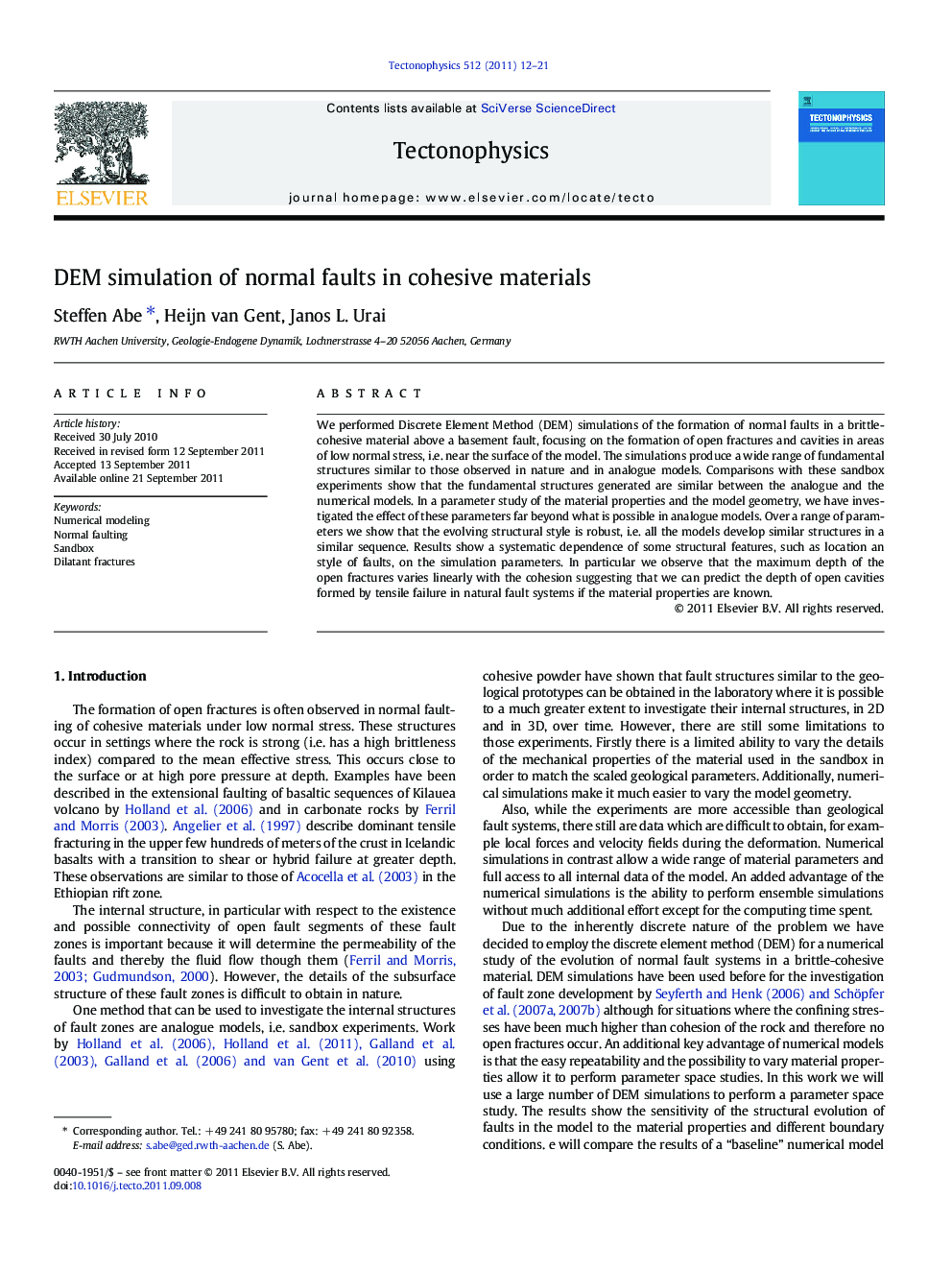| Article ID | Journal | Published Year | Pages | File Type |
|---|---|---|---|---|
| 4693017 | Tectonophysics | 2011 | 10 Pages |
We performed Discrete Element Method (DEM) simulations of the formation of normal faults in a brittle-cohesive material above a basement fault, focusing on the formation of open fractures and cavities in areas of low normal stress, i.e. near the surface of the model. The simulations produce a wide range of fundamental structures similar to those observed in nature and in analogue models. Comparisons with these sandbox experiments show that the fundamental structures generated are similar between the analogue and the numerical models. In a parameter study of the material properties and the model geometry, we have investigated the effect of these parameters far beyond what is possible in analogue models. Over a range of parameters we show that the evolving structural style is robust, i.e. all the models develop similar structures in a similar sequence. Results show a systematic dependence of some structural features, such as location an style of faults, on the simulation parameters. In particular we observe that the maximum depth of the open fractures varies linearly with the cohesion suggesting that we can predict the depth of open cavities formed by tensile failure in natural fault systems if the material properties are known.
► DEM of normal faulting in cohesive materials closely matches laboratory results. ► Major structural elements are robust despite approximate material parameters. ► Systematic variation of fault locations with model parameters.
